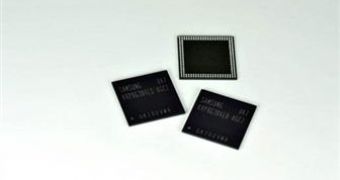The one big issue with DRAM chips at the moment is that they still haven't recovered from their sales and price lapse, and while June might not necessarily see the end of this issue, a more advanced chip making process will get ramped up.
DRAM chips have not been having the best year, at least as far as their makers are concerned, mostly because demand has been weak for months.
This made their prices fall significantly, but it looks like the cause of their slight rise could become more of a problem.
Ironically enough, the disaster that hit Japan on March 11 disrupted fab activities enough that inventories are not being replenished as fast as before, easing the oversupply issue.
Unfortunately, this whole mess may fall into undersupply soon enough, depending on how chip makers manage to make up fro the impact.
Either way, their roadmaps don't seem to have taken too much of a hit, what with reports now saying that the move to 30nm-class will be done during the second half of the year.
More specifically, mass production of 3xnm-based DRAM will go to a higher level in the third or fourth quarter.
That said, Samsung has already begun to make chips on the 35nm technology, this node expected to account for about 30% of its total DRAM output for the ongoing second quarter.
One can only guess just how many memory chips will sell this year at this rate and how high a revenue figure they allow their makers to achieve once they get around to it.
For those that want more clarity, advancing to a better chip node means smaller prices and overall better performance, not to mention higher energy efficiency.
Coupled with the drop in central processing unit prices, the new RAM will enable not just netbooks, but all systems, both on the consumer and enterprise markets, to get even more affordable than they are now.

 14 DAY TRIAL //
14 DAY TRIAL //